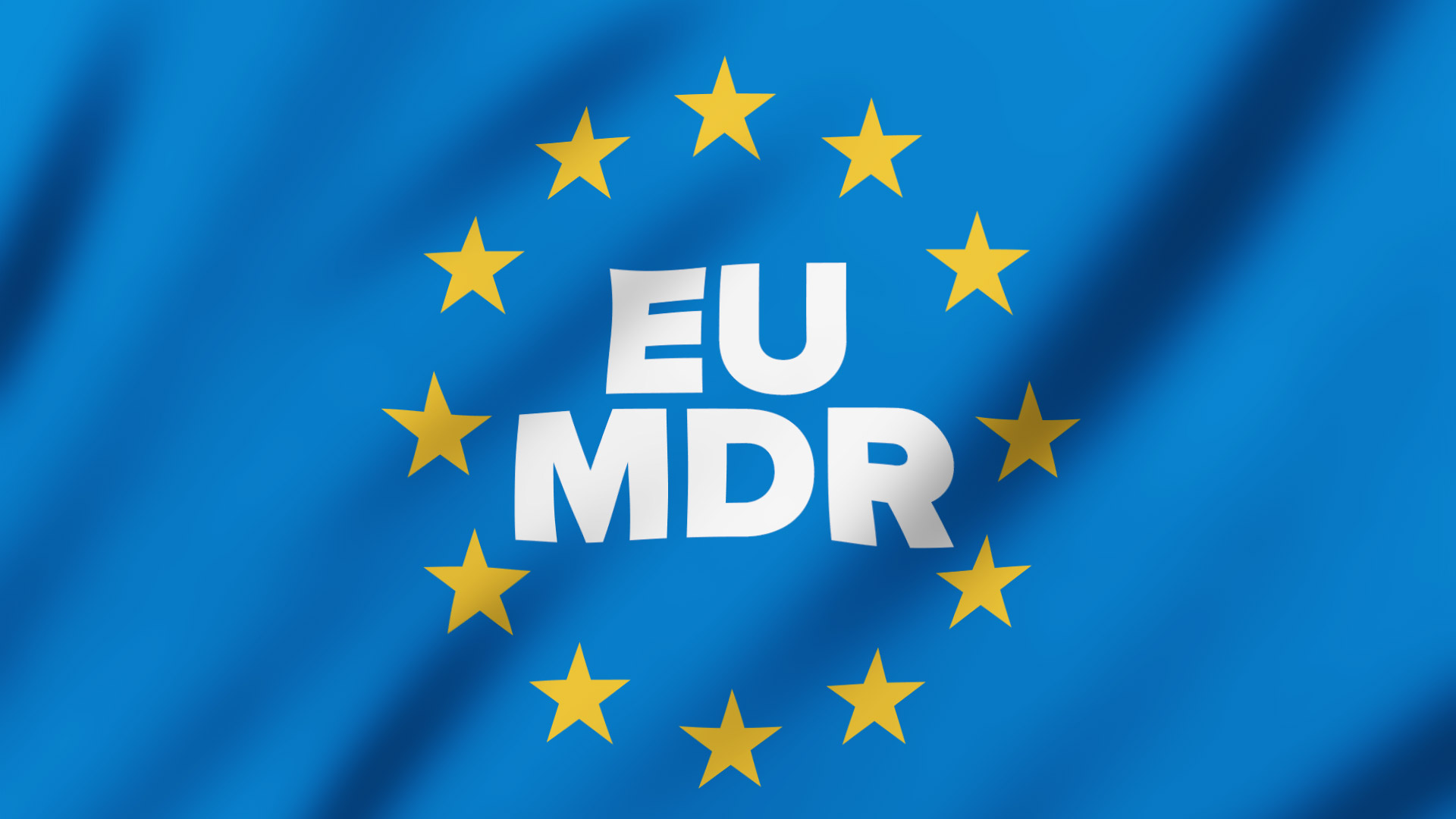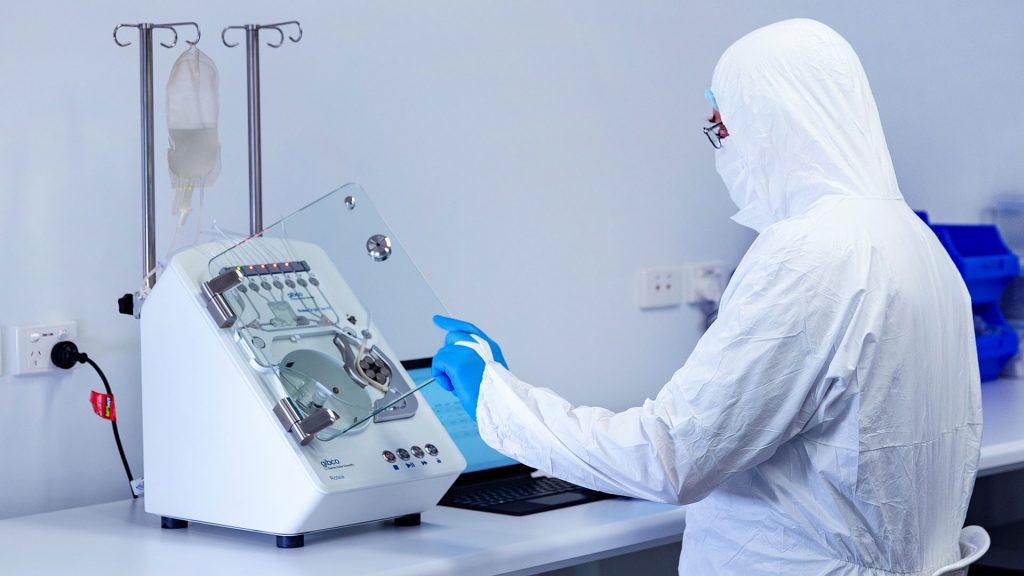
With about six months until the deadline for complying with the new European Medical Device Regulations, we look at the major changes impacting medical device manufacturers and the release of a few recent guidance documents by the European Commission.
The regulations governing medical devices in Europe are changing – in a big way. From May 2020, manufacturers will need to ensure that all* devices meet the new European Medical Device Regulations (MDR)1. Two years later, new In Vitro Diagnostic Device Regulations (IVDR) will also come into force.
The new regulations are a huge leap forward in the European regulatory landscape. Introduced on the back of the Poly Implant Prostheses (PIP) breast implant scandal2 (where implants made with substandard silicon were given to about 300,000 women in Europe and South America), the new regulations aim to improve patient safety. Manufacturers will need to make significant changes to product classification, clinical and performance requirements, and post-market surveillance.
This article provides an overview of the most important changes and additions introduced by the MDR.
More robust and rigorous regulations
The MDR combines legislation for medical devices and active implantable medical devices into one document, replacing the Medical Device Directive (MDD) and Active Implantable Medical Device Directive (AIMD).
The MDR is much longer and more comprehensive than the MDD – it has 101 Recitals and 123 article numbers across 10 chapters, 17 annexes and 175 pages. This is a massive change and will greatly increase the rigor and robustness of the regulations governing bringing products to EU markets. With about six months left of the transition period for the new MDR, there hasn’t been much guidance material released by the European Commission to assist companies in implementing these new regulations.
In March this year (2019), the Council of the European Union released a corrigendum3 to the EU MDR for the regulations where there may have been confusion or where slight tweaks were necessary.
No “grandfathering”
The regulations will apply to all existing (grandfather) devices, as well as new devices. This means that all* currently certified medical devices need to comply with the new regulations by May 26, 2020. Extensions to this deadline may be granted on a case-by-case basis.
New European compliance expert body
The MDR concentrates the harmonization efforts between European member states by means of a new regulatory body called the Medical Device Coordination Group (MDCG).
The objective of the MDCG is to foster cooperation between the member states while increasing the Commission’s power to act as needed in acute cases. Its members are experts representing competent authorities of the EU countries.
The MDCG has 11 working groups:
- Notified Bodies Oversight
- Standards
- Clinical Investigation & Evaluation (CIE)
- Post-Market Surveillance & Vigilance (PMSV)
- Market Surveillance
- Borderline & Classification (B&C)
- New Technologies
- European Database for Medical Devices (Eudamed)
- Unique Device Identification (UDI)
- International Matters
- In Vitro diagnostic medical devices (IVD)
Expanded functionality for Eudamed
Eudamed will be the central European database used in collecting information about medical devices. It is roughly equivalent to the FDA’s MAUDE (Manufacturer and User Facility Device Experience). Currently, Eudamed is only available to the European Commission and Competent Authorities, but the new version, due to go live in March 2020 but now delayed until May 2022, will also be open to Notified Bodies, industry and the general public. For compliance to the EU MDR, the functionality of the database will be expanded to include not only UDI registration requirements but also registration of other information including medical device post-market follow-up, safety and clinical information, manufacturer’s registration and others.
The European Commission issued two essential actions to implement MDR/IVDR, namely the Eudamed Functional Specifications4 and Medical Device Nomenclature5.
Changes to medical device classifications
The definition of medical device will be broadened to include non-medical and cosmetic devices not previously regulated. Examples include products for cleaning, disinfection or sterilization of devices as well as colored contact lenses, liposuction equipment, lipolysis or lipoplasty 1.
While the Class I, Class II and Class III classification system has been retained, rules have tightened and changed for some products, which will result in some devices being reclassified to higher classes. The definitions and basic principles have some minor changes. There are 22 classification rules in Annex VIII1, some of which are new and some have changed.
Changes to compliance responsibilities
The MDR is attempting to professionalize the implementation of compliance by mandating that every manufacturer identifies a Person Responsible for Regulatory Compliance 1. This is a new job responsibility. The European Commission this year released a new guidance document6 on Article 15 regarding the person responsible for regulatory compliance under the MDR and the IVDR.
There are additional responsibilities for companies in the supply chain, such as economic operators, importer and distributors. These responsibilities include:
- Place only conforming devices on the market
- Verify CE mark; CE Declaration of Conformity
- Verify Labelling requirements
- Storage and transport conditions compliance
- Inform Supply chain, manufacturer, authorities and NB on certain issues
- Ensure traceability
- Co-operate in corrective actions, provide samples/access etc
Updates to General Safety and Performance Requirements
All medical devices must fulfil Annex I1, General Safety and Performance Requirements (GSPR), which included chapters on general requirements, design and manufacture, and information supplied with the device. Manufacturers will need to demonstrate how they have met each requirement of the annex.
Manufacturers using CE certificates issued under the current MDD will need to demonstrate that the device is “state of the art” under the new MDR.
In August 2019, the MDCG released a guidance document7 to support manufacturers create a summary of safety and clinical performance (SSCP), as required by the MDR for implantable devices and for class III devices that are not custom-made or investigational. The main purpose of this document is to provide guidance on the presentation, content and validation of the SSCP.
Greater emphasis on clinical data and clinical evaluations
Much greater emphasis will be placed on clinical data and clinical evaluations. Equivalence, currently commonly used to justify references to studies done with other devices, will be more rigorously interpreted. This will be a far more challenging way to demonstrate clinical safety or performance for medical devices.
Introduction of Mandatory Unique Device Identification (UDI)
UDIs will be introduced with the intention to improve the traceability of devices. Where previously manufacturers could use their own device identification formats, devices must now have a UDI that is logged with Eudamed and directly attached to the device or its packaging (e.g. by a label or barcode). The UDI-DI must also be referenced in the Declaration of Conformity (DoC).
The UDI is made up of two identifiers:
- Device identifier (UDI-DI) – based on the manufacturer and device
- Production identifier (UDI-PI) – based on the production series or batches
The MDCG has released new guidance documents related to Eudamed explaining registration of legacy devices in Eudamed without a unique device identifier (UDI) 8, and timelines for registration of device data elements in Eudamed9. In addition, MDCG has also released a series of guidance documents related to UDI10.
Greater focus on post-market surveillance and vigilance
The MDR will focus much more on the process of post-market surveillance and vigilance. Under the MDR, each product needs a:
- Risk Management plan
- Clinical Evaluation plan
- Post-Market Surveillance plan (PMS)
- Post-Market Clinical Follow-up plan (PMCF)
Looking at the Post-market Surveillance plan requirements in more detail:
- The PMS plan shall specify how post-market surveillance will be done
- PMS must be systematic, pro-active and with effective elements
- PMS data must be presented in a clear, organized, readily searchable, and unambiguous format
- The PMS plan can lead to two different types of report, which need to be submitted to different regulatory bodies at different frequencies depending on the class of the device
|
Risk Class |
Kind of Report |
Update Frequency |
Submit to |
|
Class I |
Post-market surveillance report (PMS) |
When necessary |
Authority |
|
Class IIa |
Periodic Safety Update Report (PSUR) |
Bi-annual |
Notified Body |
|
Class IIb |
Periodic Safety Update Report (PSUR) |
Annual |
Notified Body |
|
Class III |
Periodic Safety Update Report (PSUR) |
Annual |
Notified Body for review then EUDAMED |
|
Implantable & Class III |
Summary of Safety and Clinical Performance (SSCP) |
Annual |
NB for review EUDAMED for public |
- The MDR will introduce new requirements for vigilance systems around reporting serious incidents and solving problems in the field. These requirements include risk analysis of serious incidents; exemption for Serious Adverse Events (SAE) in PMCF studies; reporting before taking a Field Safety Corrective Action (FSCA); informing a competent authority before investigations with impact on device or units/batch; and, importantly, manufacturers have a maximum of 15 days to report a serious incident to Eudamed.
What happens if I don’t comply?
Missing the deadline to comply is simply not an option, as the consequences could be disastrous. Losing CE mark certification, having to withdraw devices from the market, or delaying the introductions and launches of certain devices could be crippling for any company. Such outcomes would not only bring about incremental costs and financial distress, but would also potentially cause long-term damage to the business and reputation of many otherwise outstanding organizations.
*Update: 25 November 2019
In November 2019, the European union has published a second corrigendum for the MDR, in which they have extended certain Class I devices an additional four years to comply to the MDR. This corrigendum proposes to make changes to Article 78(8), Article 84, Article 88(1), Article 120 (3), Article 120(4), Article 120(8), Article 122, Annex I and Annex III 11. However, this corrigendum needs to be adopted by the European parliament to take effect.
Summary
The introduction of the new MDR is a big leap for medical device manufacturing for Europe. With about six months to get their ducks in a row, manufacturers need to have a firm understanding of the new regulations and what processes they need to implement to ensure their products comply. While introducing the new requirements is undoubtedly causing headaches for manufacturers, particularly as there has been very few guidance documents released by the European Commission, the long-term benefits to patient safety make the MDR a welcome development.
Find out more about PI’s Quality Management Systems or get in touch at qa@planetinnovation.com.au
Further information
The European Commission has released a Fact sheet for healthcare professionals and health institutions.
They have also released Guidance on Qualification and Classification of Software in Regulation (EU) 2017/745 – MDR and Regulation (EU) 2017/746 – IVDR. This document, which primarily targets medical software manufacturers, defines the criteria for the qualification of software falling within the scope of the new medical devices regulations and provides guidance on the application of classification criteria for software under the regulations.
References
- “Regulation (EU) 2017/745 of the European Parliament and of the Council of 5 April 2017 on medical devices, amending Directive 2001/83/EC, Regulation (EC) No 178/2002 and Regulation (EC) No 1223/2009 and repealing Council Directives 90/385/EEC and 93/42/EEC,” Official Journal of the European Union, May 5, 2017.
- Russell, Benjamin. “PIP breast implant scandal: Victims visited by bailiffs,” BBC, May 28, 2019.
- “15409/1/19 REV 1 – Corrigendum for the EU MDR,” Official Journal of the European Union, March 13, 2019.
- “Eudamed Functional Specifications,” European Commission, March 6, 2019.
- “Medical Device Nomenclature,” European Commission, March 4, 2019.
- “MDCG 2019-7 Guidance on Article 15 of the Medical Device Regulation (MDR) and in vitro Diagnostic Device Regulation (IVDR) regarding a ‘person responsible for regulatory compliance’ (PRRC),” European Commission, July 1, 2019.
- “MDCG 2019-9 Summary of safety and clinical performance A guide for manufacturers and notified bodies – August 2019,” European Commission, September 26, 2019.
- “MDCG 2019-5 Registration of legacy devices in EUDAMED,” European Commission, April 15, 2019.
- “MDCG 2019-4 Timelines for registration of device data elements in EUDAMED,” European Commission, April 15, 2019.
- Guidance documents related to UDI:
-
- MDCG 2019-1 MDCG guiding principles for issuing entities rules on Basic UDI-DI
- MDCG 2019-2 Guidance on application of UDI rules to device-part of products referred to in article 1(8), 1(9) and 1(10) of Regulation 745/2017
- MDCG 2018-1 v2 Guidance on basic UDI-DI and changes to UDI-DI
- MDCG 2018-2 Future EU medical device nomenclature – Description of requirements
- MDCG 2018-3 Guidance on UDI for systems and procedure packs
- MDCG 2018-4 Definitions/descriptions and formats of the UDI core elements for systems or procedure packs
- MDCG 2018-5 UDI assignment to medical device software
- MDCG 2018-6 Clarifications of UDI related responsibilities in relation to article 16
- MDCG 2018-7 Provisional considerations regarding language issues associated with the UDI database
-
- Corrigendum: Regulation (EU) 2017/745 of the European Parliament and of the Council of 5 April 2017 on medical devices, amending Directive 2001/83/EC, Regulation (EC) No 178/2002 and Regulation (EC) No 1223/2009 and repealing Council Directives 90/385/EEC and 93/42/EEC (English version starts on page 44)








